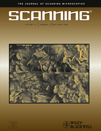Confocal microscopy reveals Myzitiras and Vthela morphotypes as new signatures of malignancy progression
Abstract
G3S1 cells are a new line derived from EM-G3 breast cancer cells by chronic nutritional stress and treatments with 12-O-tetradecanoylphorbol-13-acetate. These cells are capable of growing in standard medium. G3S1 cells exhibited elevated invasiveness in Matrigel invasion chambers as compared with parental EM-G3 cells. Elevated invasiveness of G3S1 cells was accompanied by higher incidence of myzitiras morphotype (sucker-like) and newly observed vthela morphotype (leech-like) both inducible in Hanks' Balanced Salt Solution test. Time-lapse phase contrast microscopy showed a capacity of G3S1 cells to form lobopodial protrusions already 20 min after seeding on gelatin. These protrusions could make contact with the dish and possibly produce the vthela shape. The possible relationship of mysitiras and vthela morphotypes to an increase in malignant potential marked by enhanced invasiveness was thus indicated. SCANNING 31: 102–106, 2009. © 2009 Wiley Periodicals, Inc.




